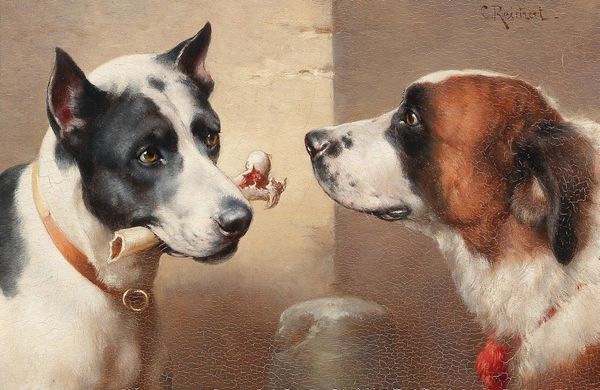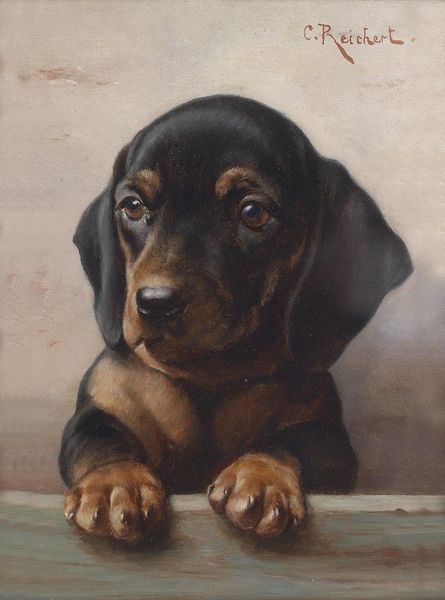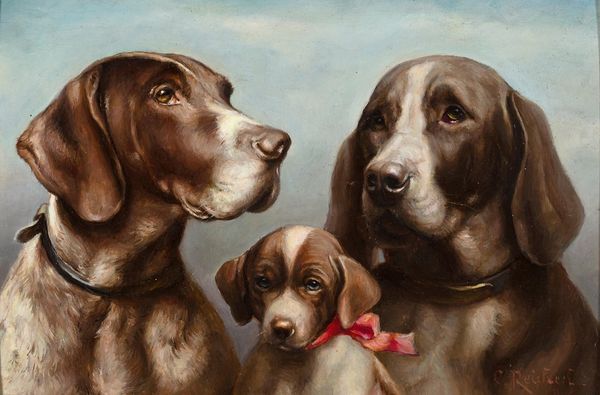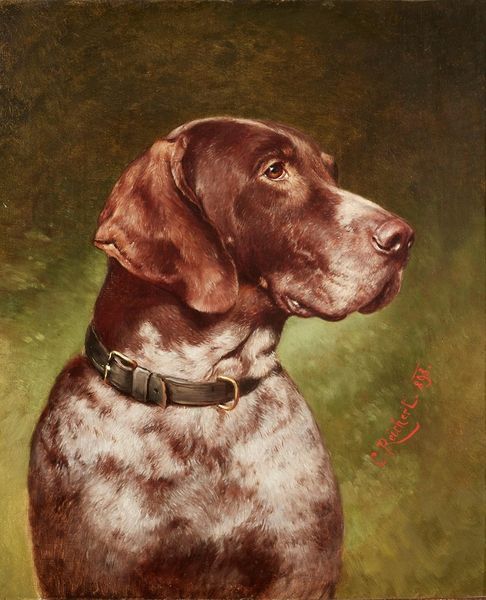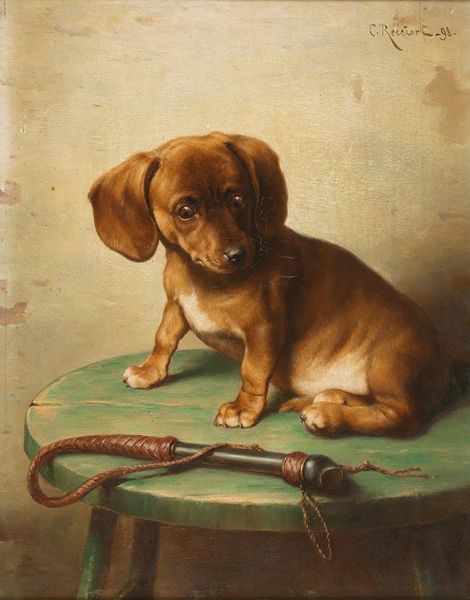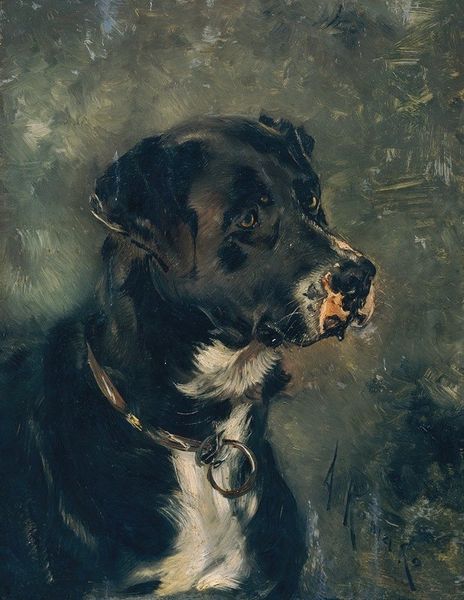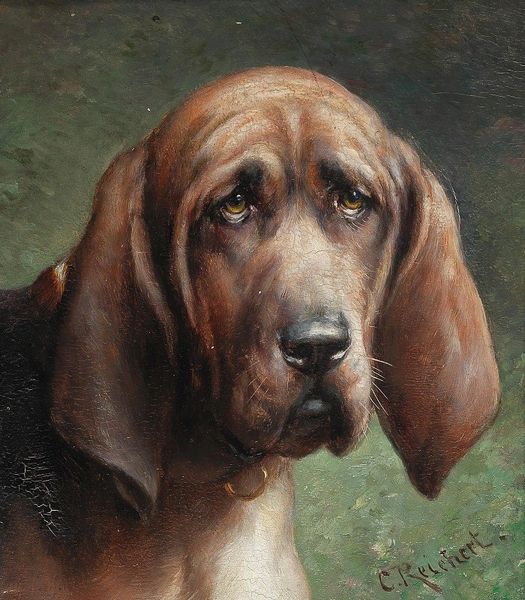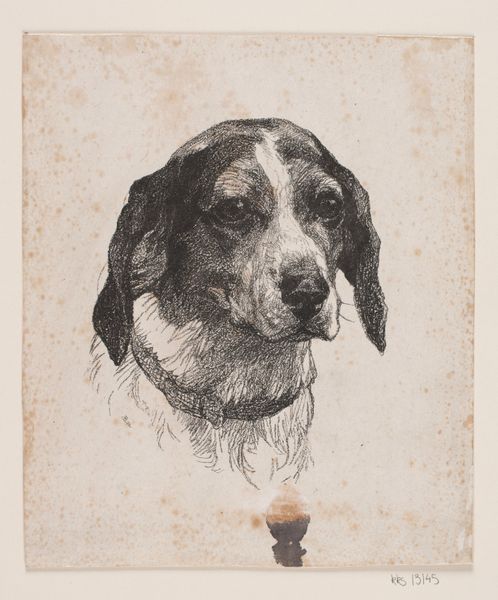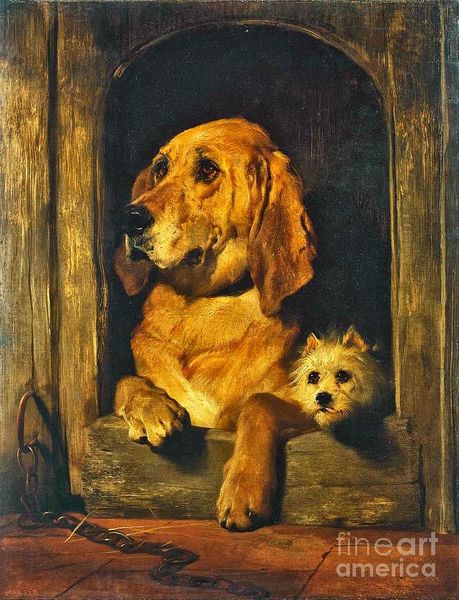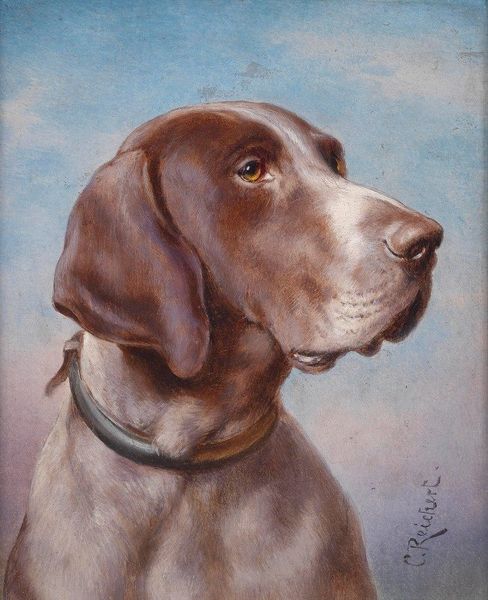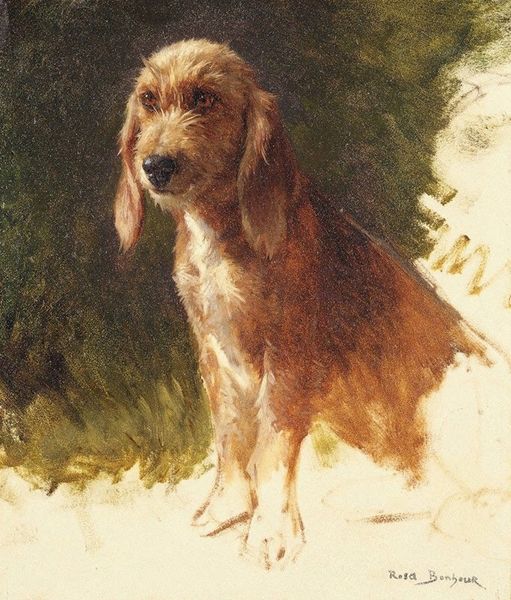
painting, oil-paint
#
portrait
#
animal
#
painting
#
oil-paint
#
oil painting
#
animal portrait
#
genre-painting
#
portrait art
#
realism
Copyright: Public Domain: Artvee
Curator: Carl Reichert’s oil painting, "Gordon Setter with Mallard Duck," really captures a moment in sporting life. Editor: Oh, he looks so proud, doesn't he? There’s almost a melancholy to his eyes despite the duck in his mouth. What strikes me is the sheen on the dog’s coat; you can almost feel the texture. Curator: It’s the details that draw me in as well, like how the artist used thin glazes of oil-paint, to achieve the fur's textures. Consider also how labor and class factor in its history of production: oil paint in itself was industrialized; while images of trained animals such as hunting dogs served the social elites. Editor: So, is this a portrait about societal status? I just saw a good dog doing his job, you know? It feels very immediate; like I could reach out and pet him! Curator: Well, "genre paintings" like these offer idealized representations of domesticity. We might even read this as commentary about ownership – both of the animal and the land. I am reminded that hunting as a sport often entails controlling access to natural resources and game. Editor: I hadn't considered those aspects. But I can still appreciate its beauty, even if there's a darker side to the story being told. I think Reichert’s technical ability can also speak volumes. How difficult must that subject matter have been?! The feathers look very convincing, don't you think? Curator: Absolutely! The dog seems stoic. And in a way, you may look at this work as capturing the social dynamics through visual means, it provides much food for thought when thinking about labor and land ownership. Editor: In the end, whether it's about canine accomplishment or social standing, Reichert clearly had the sensitivity of an artist to capture emotion, light, and the textures surrounding this canine friend! I almost want to know what happens to that duck after all this is over!
Comments
No comments
Be the first to comment and join the conversation on the ultimate creative platform.
